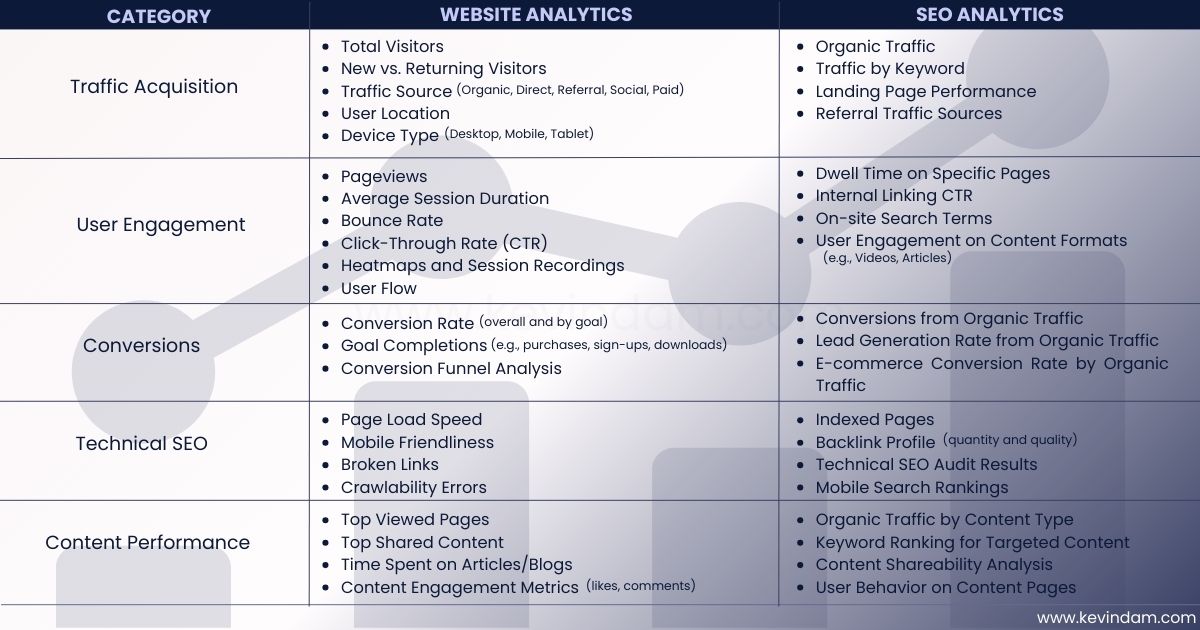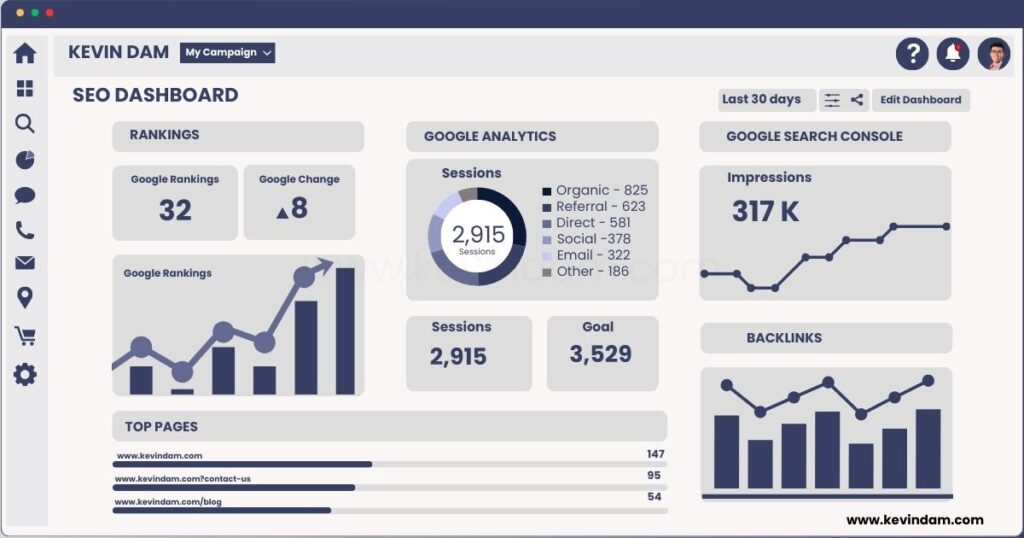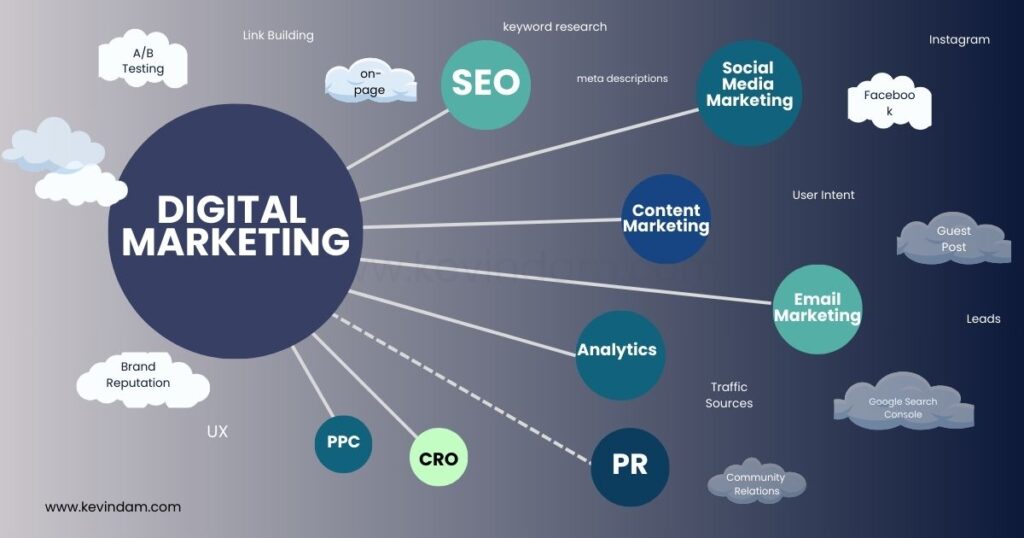
Last Updated August 14, 2024
SEO Analytics Mastery: Advanced Techniques for Driving Traffic and Conversions
Standing out in rates, digital marketing demands strategic navigation guided by SEO analytics. This data offers guidance to help you make wiser decisions and enhance your site’s SEO performance over time. Because you can’t improve your strategy without knowing what works and what doesn’t.
This article discusses the advanced techniques for mastering SEO analytics to drive traffic and conversions. It highlights the importance of tracking key metrics to refine your marketing strategies and identify competitive opportunities. Understanding and utilising SEO analytics tools, such as Google Search Console and Google Analytics, enables businesses to enhance their site’s performance. Analysing important metrics helps improve search engine rankings, shape traffic patterns, and accelerate conversions.
Website Analytics vs SEO Analytics
SEO analytics isn’t merely about numbers and charts. It aids in interpreting data to enhance organic visibility, evaluating your site’s search engine health, and determining how you can optimise your SEO strategy to bring in more traffic.
While website analytics provide insights into user behaviour, SEO analytics offer a glimpse into the site’s search engine performance. Here is a table representation of website vs SEO analytics:
Importance of SEO Analytics
SEO analytics is vital for understanding the effectiveness of your digital marketing efforts. Analysing key stats from a well-organised SEO dashboard helps businesses make informed choices to improve their strategies.
Here’s a list of the importance of SEO analytics:
- Track progress and identify areas for improvement: You can see what’s working and what’s not with your SEO efforts by monitoring key metrics such as search volumes, organic traffic, user actions, engagement, bounce and exit rates, and conversions. This data helps you refine your strategy and focus on areas with the biggest impact.
- Measure ROI (Return on Investment): Monitoring conversions and organic traffic is crucial for evaluating the success of your SEO strategies in driving leads and sales. This analysis enables you to assess the return on your SEO investment.
- Reveal valuable user insights: SEO analytics tools can reveal how users discover your website and engage with its content, enabling you to customise your website to better suit user needs. For instance, analysing average session duration and bounce rates can provide insights into the user experience. High bounce rates and shorter session durations indicate that users struggle to find what they seek, prompting a review of content quality and relevance.
- Identify competitor strategies: Utilise SEO analytics tools to identify the keywords your competitors rank for and the content they produce. Understanding your competitor’s strengths and weaknesses helps you identify opportunities to outrank them on search engine results pages (SERPs).
- Monitor website health: SEO analytics can help you identify technical issues on your website that could be impacting your search rankings. These might include slow loading times, broken links, duplicate content, crawl errors, and mobile-friendliness issues. Identifying and fixing these issues allows search engines to easily access and index your website, providing users with a positive experience when visiting your site. SEO data shows keyword and page performance, internal link strength, and domain authority, indicating site competitiveness in its niche.
SEO analytics guides a cyclical, iterative approach involving measurement, learning, and optimisation. This process fuels an ongoing cycle of enhancing SEO performance.
SEO Analytics Process
This process might depict the cyclical nature of SEO analytics:
Define SEO Goals –> Measure Key Metrics –> Analyze Data for Insights –> Implement SEO Tactics –> Evaluate Impact –>Adjust SEO Strategy Accordingly –> Repeat
Concise paragraphs and visual aids, such as tables showcasing keyword performance or SEO metric lists, can significantly boost the clarity and usefulness of an SEO analytics report. These tools translate data into actionable insights that drive a website towards its goals in search rankings and user engagement.
Using SEO analytics effectively means continually evolving your understanding of how content interacts with user intent and search engines, tweaking your approach to stay ahead in the digital marketing race. Whether your focus is refining your content, improving site structure, or building authoritative backlinks, a strategic approach rooted in SEO analytics will guide the way to a more visible, engaging, and successful online presence.
Essential SEO Metrics and Tools

Navigating SEO needs a reliable compass – SEO metrics. They show how well your website performs in search engines, highlighting optimisation opportunities and areas needing attention.
With various SEO tools available, marketers can collect data on their website’s online presence. These tools provide competitive analysis and keyword research, from Google Search Console to Ahrefs and SEMrush. The right tools and metrics unlock valuable information for a successful SEO strategy.
Key Metrics for Evaluating SEO Performance
When it comes to evaluating SEO performance, an array of metrics informs on various aspects of your web presence. Below is a table breaking down some of these essential metrics:
| Metric | Definition | Significance |
| Sessions | Total number of individual website visits. | Indicates the level of user interest and engagement. |
| Users | Unique visitors to your website. | Helps in understanding the reach of your website. |
| Pageviews | Total number of pages viewed. | Reflects content engagement levels. |
| Goal Completions | Total achievements of defined objectives, e.g., form submissions and sign-ups. | Measures conversion effectiveness. |
| Conversion Rate | Percentage of visitors who take a desired action. | Gauges the website’s ability to drive actions. |
| Page Speed | How fast does content on your page load? | Impacts user experience and SEO rankings. |
| Mobile-Friendliness | How well a website functions on mobile devices. | Vital for ranking following mobile-first indexing. |
| Backlinks | Links from other sites to your website. | Signals website authority and affects rankings. |
| Local Search Ranking | How well does your site rank in local-centered queries? | Critical for businesses targeting local customers. |
| Bounce Rate | Percentage of visitors who navigate away after viewing only one page. | Can indicate relevance and quality of content. |
| Average Time on Page | The average duration visitors spend on a single page. | Reflective of user engagement with content. |
| Exit Pages | The last pages visited before leaving the site. | Signals potential issues with specific pages. |
Tracking these metrics helps scrutinise everything from organic search traffic to user engagement and conversion performance. Understanding each metric’s place in the greater context of SEO health allows marketing professionals to fine-tune their websites to meet user and search engine expectations.
Setting Up the Right Tools
To effectively analyse your SEO efforts, you need the right tools. Each tool comes with its own strengths and functionalities. Here are some popular SEO analytics tools that can provide valuable insights:
Google Search Console offers valuable insights into website health, keyword rankings, and search traffic. It helps detect website errors, submit sitemaps, and understand how Google views your website.
Google Analytics goes deeper into user behaviour. It provides comprehensive data on website traffic, user behaviour, conversions, and more. It allows you to track your SEO performance, set goals, and measure the success of your campaigns.
Understanding each metric’s place in the greater context of SEO health allows marketing professionals to fine-tune their websites to meet user and search engine expectations.
Ahrefs is a robust tool that enhances your ability to conduct competitor analysis, backlink research, and keyword exploration, offering an extensive database for SEO and marketing insights.
SEMrushis an all-in-one digital marketing tool that provides data and insights for SEO, PPC, content marketing, and social media.
By employing these analytics tools and understanding the significance of the associated metrics, SEO professionals can craft strategies that are data-informed, effective, and aligned with business objectives.
Building SEO Dashboard

An SEO dashboard is a centralised location where you can easily see key metrics and data about your website’s performance. Setting up a dashboard saves time and effort compared to collecting this information manually from various sources.
Its customised layout helps make quick decisions, enabling SEO experts and marketers to gain insights into their Google search presence and quickly respond to changes in organic traffic, keyword rankings, user behaviour, and more without using multiple tools or losing track of the main goals.
To create your SEO dashboard, follow these essential steps:
- Identify Objectives: Clearly define what you want your SEO dashboard to achieve. Whether monitoring bounce rates, tracking organic search traffic improvement, or analysing keyword rankings, your goals will shape the dashboard’s design.
- Choose a Dashboard Platform: Select a tool to integrate your desired SEO analytics tools. Options range from proprietary SEO tools’ built-in dashboards to customisable options like Google’s Data Studio.
- Gather the Right Metrics: Compile a list of key metrics relevant to your SEO objectives. These might include conversion rate, domain authority, and average session duration, among others.
- Customise Your Dashboard: Arrange the metrics in an intuitive, easily digestible format. Customise your layout by using widgets, charts, and filters that help break down complex data sets.
- Integrate Data Sources: Connect your dashboard to various SEO and analytics tools such as Google Analytics, Google Search Console, and Ahrefs. This ensures a seamless flow of data directly into your dashboard.
- Test and refine: After the initial setup, test your dashboard to ensure it correctly pulls and displays data. Make the necessary adjustments to improve accuracy and responsiveness.
Once your SEO dashboard is operational, continuous monitoring is crucial for a strong SEO strategy. Regular analysis enables you to adjust strategies to evolving search engine algorithms or market trends.
Actionable Insights from SEO Analytics
SEO analytics are packed with valuable information essential for boosting traffic and conversions. But how do you find the most important parts?
Data is nothing if you don’t act on it. Translating key metrics like organic search traffic, bounce rates, and conversion rates helps refine SEO efforts. Establish periodic reviews to ensure your SEO campaign aligns with search intent and user behaviour trends.
Interpreting data correctly separates a stagnant SEO strategy from a dynamic, results-driven one. Here’s how to translate raw data into actionable insights that boost your website’s ranking and traffic:
- Identify high-traffic, high-conversion keywords.
These keywords are your golden goose. Analyse which keywords are driving the most organic traffic and conversions. Focus on creating more content around these topics and optimising existing content for better ranking. - Find low-traffic, high-potential keywords.
Look for keywords with decent search volume but low traffic to your site. This indicates an opportunity to create content that fills the gap and targets those keywords. - Analyse user behaviour on specific pages.
See which pages have high bounce rates (users quickly leaving) and low dwell time (amount of time spent). This suggests the content might not be engaging or relevant. Refine the content or consider restructuring the page for better user flow. - Compare your keyword rankings with your competitors.
Identify the keywords your competitors rank for but you don’t. This unveils potential opportunities to target relevant keywords and outrank them. - Identify backlink opportunities.
Utilise Google Search Console’s backlink data to track your backlink profile. Assess the quality and quantity of incoming links, and compare which websites link to your competitors but not yours. Reach out to those sites and explore potential collaborations or guest posting opportunities to earn backlinks and boost your authority. Spotting a trend in high-quality referrals could incite a targeted link-building initiative or partnership with influential domains, thereby improving Domain Authority.
Significance of User Experience in SEO Analysis

User experience (UX) is crucial in SEO analytics. Search engines such as Google favour websites that offer a seamless user experience, highlighting the importance of optimising your site accordingly. A positive user experience not only leads to higher rankings but also improves conversion rates. Here are some aspects of UX to consider in your SEO analysis:
- Page loading speed
Users are increasingly impatient with slow-loading websites. Use tools like Google PageSpeed Insights to assess your website’s speed and identify any areas for improvement. - Mobile responsiveness
More than half of all internet traffic comes from mobile devices. Ensure your website is fully optimised for mobile use, including responsive design and mobile-friendly navigation. - Organic Traffic and Bounce Rate
High organic traffic indicates users are finding your site, but a high bounce rate (users leaving quickly) suggests a poor UX. Conversely, a lower bounce rate with consistent traffic implies a positive user experience. - Average Session Duration
Turn to Google Analytics and examine user engagement metrics as the pulse of your content. Assess which pages have the lowest bounce rates and the highest average session durations. This informs your future content planning by highlighting the amount of time users spend on a page that reflects their engagement. Low dwell time signifies users aren’t finding the content valuable or the page is difficult to navigate. - Click-Through Rate (CTR)
Analyse the CTR on your internal links. Low CTR might indicate navigation issues or a lack of user interest in related content. - Conversion Rates
If your website aims for conversions (e.g., sales, sign-ups), track the conversion rate. A low rate could be due to a confusing checkout process or a lack of trust signals on the website.
Overlooking UX assessment in SEO analytics is a blind spot you don’t want to have. Assess how users interact with your website and address these UX shortcomings to improve your rankings and organic traffic. After all, a user-centric website inherently supports SEO, laying the foundation for a successful online presence.
Advanced SEO Techniques for Better SEO
To remain at the forefront of SEO, integrating advanced techniques is essential. The SEO analytics landscape is undergoing a transformation through a forward-thinking approach to SEO analytics, which allows them to plan ahead and stay on top in the competitive world of online marketing.
Predictive Analytics
Understanding possible changes in search engine algorithms, emerging market trends, and shifts in consumer search behaviour empowers SEO specialists to craft strategies that resonate with upcoming advancements.
SEO professionals now go beyond analysing past and current data, using tools to predict future trends and user behaviours. Predictive analytics in SEO taps into algorithms and machine learning techniques to analyse historical data and identify patterns that can forecast future outcomes.
Semantic Analysis

The use of semantic analysis and document vectors represents a leap forward in understanding search intent and optimising content. Semantic analysis goes beyond simple keyword matching. It goes into the deeper meanings and relationships between words within search queries. This allows for a more nuanced and targeted approach to content optimisation, ensuring that the material is not only keyword-rich but contextually relevant.
Document Vectors
Document vectors, a more complex concept, represent text documents in multi-dimensional space. It involves a special code that helps computers understand a document’s meaning. It takes all the article’s words and their connections and turns them into a unique code. This code allows computers to compare websites and articles very precisely.
These help search engines understand if a website is truly relevant to what someone is looking for, even if the exact keywords aren’t there, leading to better search results and happier users!
Conclusion
SEO analytics is crucial for sustained success in digital marketing. Utilising tools like Google Analytics and Google Search Console offers valuable insights into vital metrics such as organic traffic, user behaviour, and SEO performance. This insight enables businesses to improve keyword rankings, user experience, and conversion rates.However, as search engine algorithms and market trends evolve, it is crucial to adapt and continuously refine your SEO strategies. You can ensure a competitive edge by staying informed about future trends and leveraging advanced techniques.
